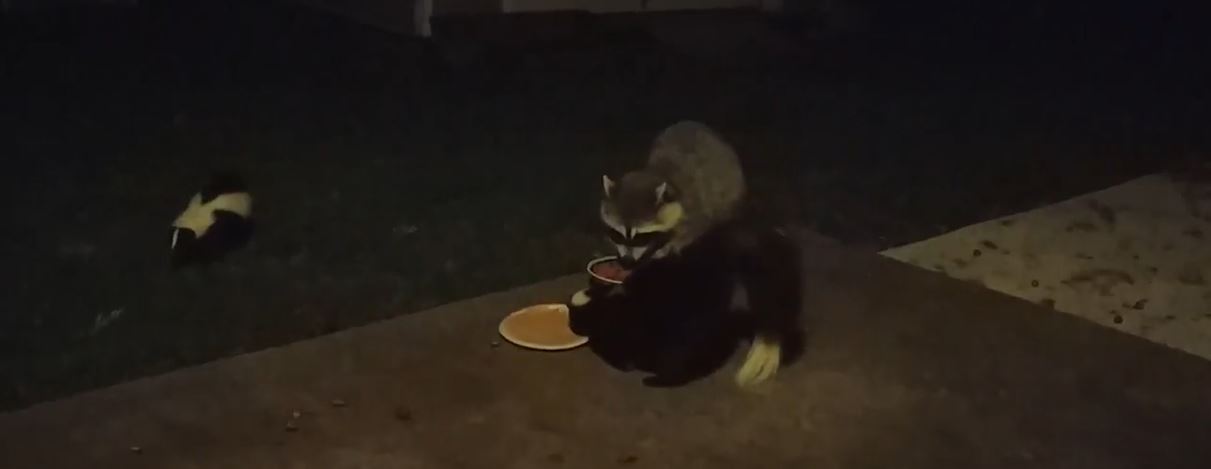How To Get Skunks Out From Under A Shed Or Porch

For some people, having skunks on their property simply seems like an accident waiting to happen. The main concern is typically being sprayed as the odor will not go away, but skunks can also damage your lawn by digging for grubs and other food, knock over garbage, or threaten your pets. Skunks prefer not to make their own burrows, which is why they see the area underneath porches and sheds as an ideal home. If you have a skunk living under these items on your property, you will be glad to know that there are options to get rid of them without being sprayed. The basic steps are as follows:
- 1. Try prevention methods
- 2. Set up large cage traps
- 3. Bait the trap
- 4. Relocate the skunk
- 5. Consider exclusion
- 6. Prevent re-entry
Each of these points will involve a little bit of time, but it is worth the effort in the end when your porch is skunk-free and you no longer have to worry about this nuisance animal.
Make The Shelter Undesirable
The first thing to try when getting skunks out from underneath your porch is to make the area undesirable to the animal. Hopefully, they will no longer like the area and simply decide to move out on their own, letting you seal up the area and get on with your life. You can try a repellent to get the skunk to leave, but keep in mind that most commercial ones won't be very effective. Instead, save some money and try a homemade option, such as citrus or hot peppers, as you won't be wasting as much money if they don't work (which is likely). You can also try removing any sources of food the skunk has on your property or try mild harassment via motion-activated sprinklers, leaving lights on at night, or playing noises at night. While this step is important to try, it is not typically successful so you should be prepared to continue with the eviction process.
Selecting A Trap
After you have unsuccessfully tried convincing the skunk that your property is not an ideal home, it is time to get ready for trapping and relocation. An alternative to this is exclusion, which is explained below. The first step of trapping is to find the ideal trap, which should be large in size and rated for either a skunk or raccoon. These are usually at least 10 x 12 x 30 inches. Always select a live trap since you want to relocate the skunk, not kill it.
Baiting A Trap
If there are no stray cats in your area, then consider using cat food or canned sardines as bait for the skunk trap. If they are a concern, you can use something such as marshmallows or even peanut butter on a few crackers or some bread. Remember to place a small amount of bait in a trail leading up to the trap as well as some in the trap itself. Once the trap is ready, place it right outside your porch or shed so the skunk will see the food as soon as they leave their den.
Relocating A Skunk
Once you have caught the skunk, approach the trap from behind and cover it with a blanket or similar object. This will prevent the skunk from seeing you, dramatically reducing the risk of being sprayed. You should not be able to safely take the skunk to a new site in its cage. Select a spot that is a minimum of 10 miles from your porch or shed and try to select an area with easy access to food, water, and shelter. If there were baby skunks present, make sure that all of them are with the mother.
Using Exclusion
Trapping and relocating the skunks living under your shed will not always be a practical option. In fact, depending on where you live, there may be restrictions to whether you can even do this or where you can release the animal. An alternative in these situations is exclusion. You can install a barrier around the shed, porch, or deck. This should be made of steel mesh and go at least a foot into the ground so the skunk cannot dig underneath to get through. Also, make sure that it slopes outward at the bottom or goes at a completely horizontal angle to further prevent digging. You will leave a small area of the skunk's shelter accessible but place a one-way door there so the skunk can leave. After all of the skunks have left, you can finish closing the gap in the exclusion barrier to prevent re-entry.
Preventing Re-Entry
If you get the skunk out from under your shed or porch by trapping and relocating, you will still need to prevent the same animal or another skunk from coming back. You can do so by installing a fence as mentioned in the exclusion technique around the base of the shed. This should stop skunks and other animals from turning this empty space into a home in the future.
Read the How to get rid of skunks page for helpful information and to learn more about How To Get Skunks Out From Under A Shed Or Porch ch

